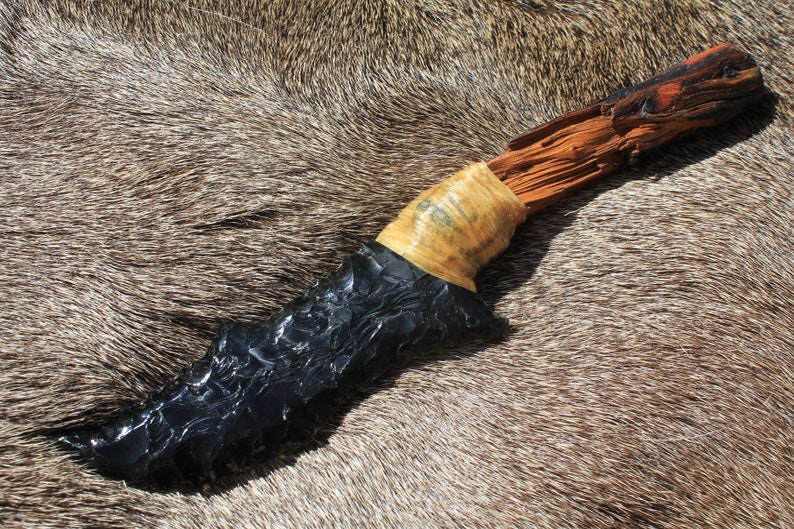
It’s not extremely rare, but there are not a lot of companies that deal with obsidian. This is linked with the material these knives are made of and how hard it is to come by it. There are two reasons for its rare status. If you are thinking about buying an obsidian knife for everyday use, you should think again – it’s almost impossible to encounter such a thing. If its blade became dull, it’d be almost impossible to sharpen it, as it’d break when you first attempt to do so. That’s the main issue with this kind of knife, you can’t place any lateral force on it – unless you want it to break. Not only that, they are almost impossible to sharpen. All in all, obsidian seems perfect for a one-time cutting session – the more you use it, the more likely it is to break. They are almost impossible to sharpen, as they can break when you try that. On the other hand, you have to be extremely careful not to exert lateral force when using it, as they are prone to break when this happens. They are incredibly sharp and can cut through almost anything, steel included. Because of this, obsidian knives are not recommended for what knives are commonly used for, like cooking or hunting. On the other hand, they are not as durable, strong, or cheap as steel knives. They are one of the sharpest knives in existence – it is believed they are 50 times sharper than their steel counterpart.

Obsidian knives are extremely sharp so it’s the best knife for cutting. But the FDA does not allow its use on human patients. Several veterinarians use obsidian scalpels to perform surgery, as it is believed this type of knife can make one of the cleanest cuts possible. Knife-enthusiasts keep obsidian alive by making and owning one of the sharpest knives there are, obsidian knives – but its proper use is fairly uncommon. Both its pottery and warfare aspect has fallen out of use. Nowadays, obsidian isn’t as valued as it used to. Most tribes who could gather obsidian used it for their weapons and commerce as well. Several deadly weapons were found around the entire continent. In the Americas, the native tribes used obsidian mostly for warfare.

In the Middle East, Ancient Egyptians used obsidian tools to engage in ritual circumcision because of its sharpness and precision. Obsidian tools have been found throughout mainland Europe, which leads us to believe it was highly valued. This material was often found around Hungary, Slovakia, Greece, and throughout the Mediterranean. In Europe, plenty of tools were made out of obsidian. Because of that, we don’t have too many written records about this part of history.Įven though there are no written records for the majority of obsidian toolmaking history, there is plenty of archeological evidence to paint a picture of the obsidian trail throughout thousands of years.

Written records, unfortunately, started at around 3200 BC, 696.800 years after the first obsidian tools were used. It is believed obsidian was first used back in 700.000 BC, and it might be even older than that. There’s no way to be sure how or why humans decided to use obsidian to make knives for the first time.
:origin()/pre00/77da/th/pre/f/2016/127/f/f/im_not_dead_by_makisoup-da1p42j.jpg)
From Argentina, all the way into the United States Italy, Greece, and Russia Down under, in New Zealand African obsidian rocks can be found in Kenya as well. You can find obsidian rocks all over the world, as long there’s volcanic activity there. Of course, any of these four scenarios happening do not ensure an obsidian-forming process – but it’s likely to happen. Lava can turn into obsidian in four different scenarios: at the edge of the lava flow, when lava goes airborne, when lava makes contact with water, and at the edge of a volcanic dome. This happens when lava comes in contact with air or water. The process is so quick atoms are unable to rearrange into a crystalline form and instead turn into a rock-like material. When a small amount of lava moves from the main flow of it all, they can cool down – but they do so rather quickly.


 0 kommentar(er)
0 kommentar(er)
